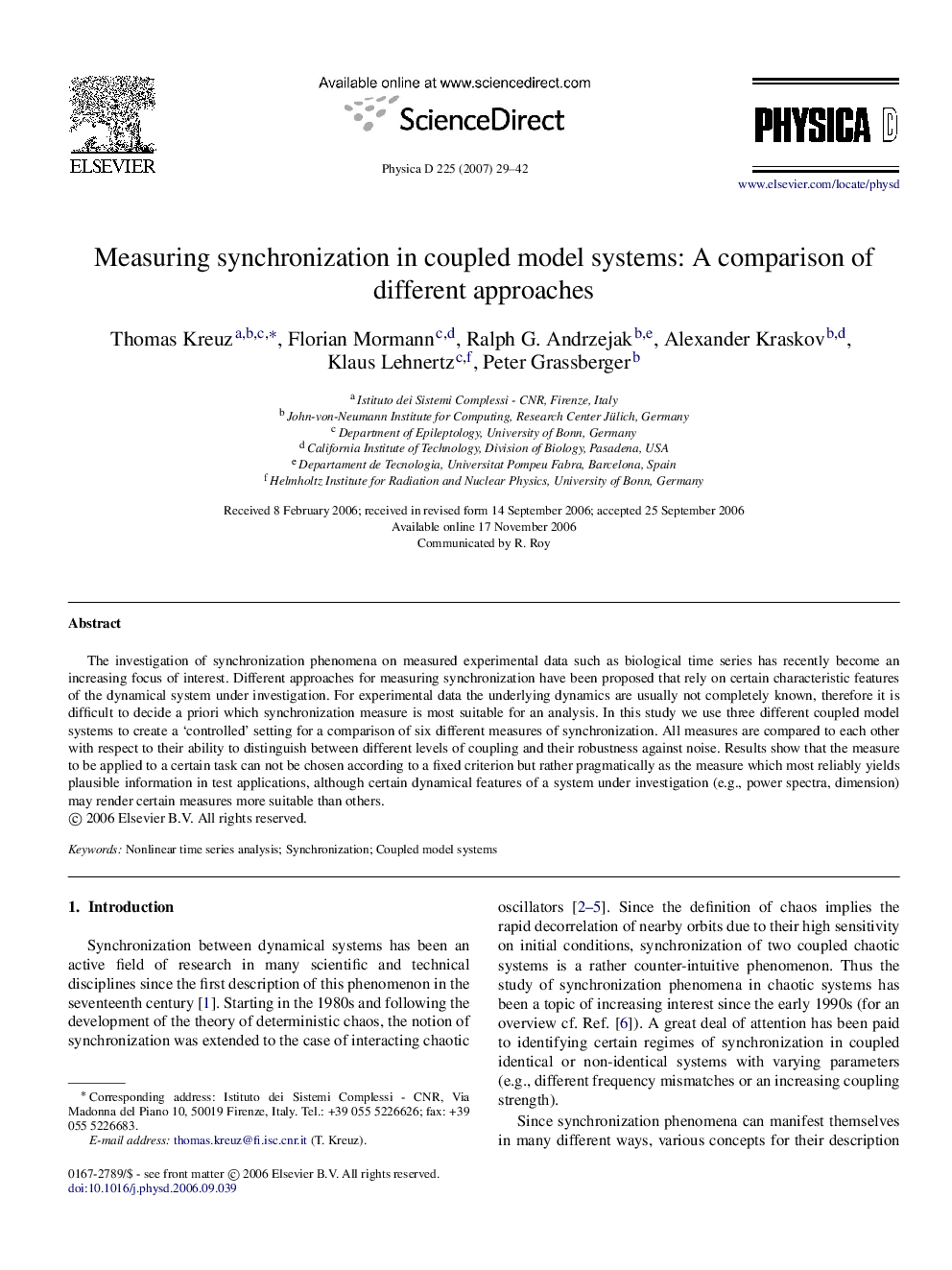| Article ID | Journal | Published Year | Pages | File Type |
|---|---|---|---|---|
| 1897363 | Physica D: Nonlinear Phenomena | 2007 | 14 Pages |
The investigation of synchronization phenomena on measured experimental data such as biological time series has recently become an increasing focus of interest. Different approaches for measuring synchronization have been proposed that rely on certain characteristic features of the dynamical system under investigation. For experimental data the underlying dynamics are usually not completely known, therefore it is difficult to decide a priori which synchronization measure is most suitable for an analysis. In this study we use three different coupled model systems to create a ‘controlled’ setting for a comparison of six different measures of synchronization. All measures are compared to each other with respect to their ability to distinguish between different levels of coupling and their robustness against noise. Results show that the measure to be applied to a certain task can not be chosen according to a fixed criterion but rather pragmatically as the measure which most reliably yields plausible information in test applications, although certain dynamical features of a system under investigation (e.g., power spectra, dimension) may render certain measures more suitable than others.
